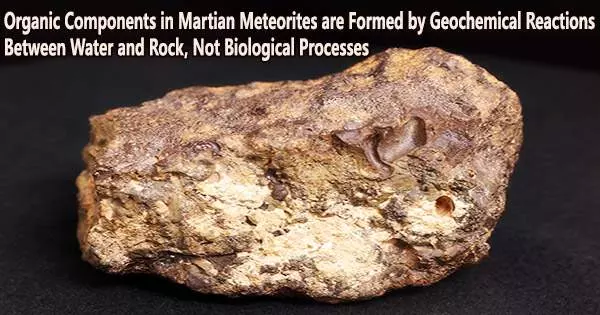According to a recent investigation headed by Carnegie’s Andrew Steele and published in Science, organic compounds discovered in a meteorite that slammed into Earth from Mars were created through interactions between water and rocks that took place on the Red Planet around 4 billion years ago.
The meteorite, called Allan Hills (ALH) 84001, was discovered in the Antarctic in 1984 and is considered one of the oldest known projectiles to reach Earth from Mars.
“Analyzing the origin of the meteorite’s minerals can serve as a window to reveal both the geochemical processes occurring early in Earth’s history and Mars’ potential for habitability,” explained Steele, who has done extensive research on organic material in Martian meteorites and is a member of both the Perseverance and Curiosity rovers’ science teams.
In addition to having carbon and hydrogen, organic molecules can also occasionally have oxygen, nitrogen, sulfur, and other elements. Although they can also be produced by non-biological processes, which are referred to as abiotic organic chemistry, organic molecules are frequently linked to life.
Scientists have been debating the origin of the organic carbon found in the Allan Hills 84001 meteorite for years. Various abiotic processes connected to volcanic activity, impacts on Mars, or hydrological exposure have been suggested as potential explanations, as have the possible remains of extinct life forms on Mars or contamination from the meteorite’s crash landing on Earth.
The Steele-led team, which also included Carnegie’s Larry Nittler, Jianhua Wang, Pamela Conrad, Suzy Vitale, and Vincent Riggi as well as researchers from GFZ German Research Centre for Geosciences, Free University of Berlin, NASA Johnson Space Center, NASA Ames Research Center, and Rensselaer Polytechnic Institute, used a variety of sophisticated sample preparation and analysis techniques including co-located nanoscale imaging, isotopic analysis, and spectroscopy to reveal the origin of organic molecules in the Allan Hills 84001 meteorite.
They discovered indications of interactions between water and rock that are comparable to those on Earth. The samples show that two significant geochemical processes took place in the Martian rocks.
These kinds of non-biological, geological reactions are responsible for a pool of organic carbon compounds from which life could have evolved and represent a background signal that must be taken into consideration when searching for evidence of past life on Mars.
Carnegie’s Andrew Steele
One of these processes, known as serpentinization, involves the chemical reaction of iron- or magnesium-rich igneous rocks with moving water. This alters the mineralogy of the rocks and generates hydrogen. The second process, known as carbonization, creates carbonate minerals when rocks and slightly acidic water with dissolved carbon dioxide mix.
Although it is uncertain if these processes were brought about by the local aquatic conditions simultaneously or in succession, the data suggest that water and rock interactions did not last for a very long time. What is evident, however, is that the reactions produced organic material from the reduction of carbon dioxide.
These mineralogical features are rare in Martian meteorites, and while carbonation and serpentinization have been shown in orbital surveys of Mars and carbonation has been found in other, less-ancient, Martian meteorites, this is the first instance of these processes occurring in samples from ancient Mars.
Steele has detected organic molecules in other Martian meteorites and from his work with the Sample Analysis at Mars (SAM) team on the Curiosity rover, indicating that abiotic synthesis of organic molecules has been a part of Martian geochemistry for much of the planet’s history.
“These kinds of non-biological, geological reactions are responsible for a pool of organic carbon compounds from which life could have evolved and represent a background signal that must be taken into consideration when searching for evidence of past life on Mars,” Steele concluded. “Furthermore, if these reactions happened on ancient Mars, they must have happened on ancient Earth, and could possibly explain the results from Saturn’s moon Enceladus as well. All that is required for this type of organic synthesis is for a brine that contains dissolved carbon dioxide to percolate through igneous rocks.”
The search for life on Mars is not just an attempt to answer the question ‘are we alone?’ It also relates to early Earth environments and addresses the question of ‘where did we come from?’
The Antarctic Search for Meteorites (ANSMET) program, which has been funded by NSF and NASA, characterized and curated by the Department of Mineral Sciences of the Smithsonian Institution and the Astromaterials Acquisition and Curation Office at NASA Johnson Space Center, respectively, recovered the US Antarctic meteorite samples.
NASA, Carnegie’s Earth and Planets Laboratory, and the Helmholtz Recruiting Initiative program funded this work.





